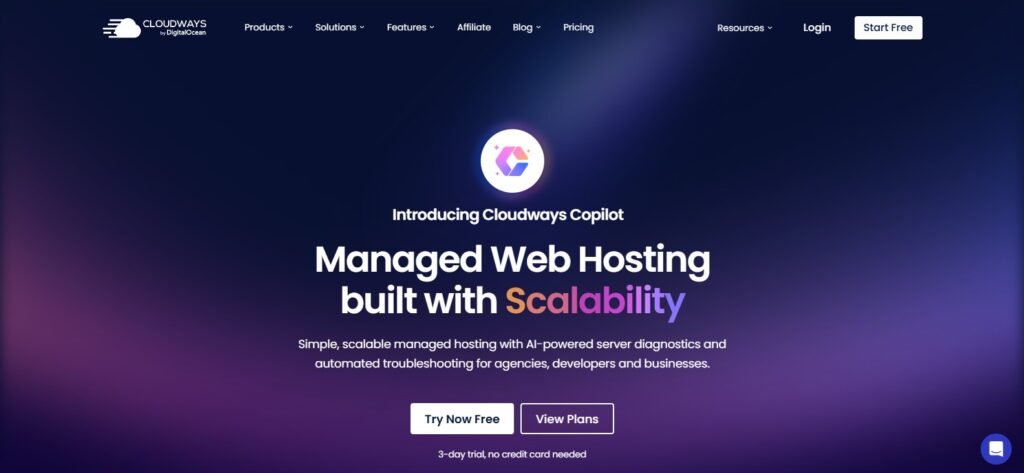The rise of remote work has completely reshaped how web developers build, deploy, and maintain websites. Gone are the days when teams worked in physical offices, pushing code to local servers. Today’s developers — especially freelancers and home-based professionals — rely on powerful, cloud-driven hosting solutions that act as their virtual workspace.
If you’re a remote web developer, your hosting isn’t just where websites live — it’s the backbone of your workflow. It affects how fast you can test projects, collaborate with clients, and deploy updates. A slow or unreliable hosting setup can destroy productivity, frustrate clients, and lead to unnecessary downtime.
This guide explains exactly what kind of hosting setup remote developers need in 2025 — including performance essentials, collaboration tools, recommended hosts, and best practices for working securely and efficiently from home.
Why Hosting Matters More for Remote Developers
For most freelancers or remote developers, hosting is not just a technical decision — it’s a business one. Your hosting determines how smoothly you manage multiple clients, deploy code remotely, or maintain uptime for live websites.
When you work from home, your local environment is often limited — you might be on a laptop with restricted bandwidth or storage. The real “engine room” of your work becomes your hosting infrastructure. That’s where your projects live, where clients test features, and where updates are pushed.
Good hosting gives you:
- Reliable uptime so clients’ sites never go down.
- SSH and Git integration to deploy changes directly from your local machine.
- Multiple environments (development, staging, production) to test safely.
- Fast databases and caching to handle modern applications.
- Scalability for when your workload and client list grow.
In other words, the right hosting setup lets you work like an agency — even if you’re coding from your living room.
Understanding Your Hosting Needs as a Remote Developer
Before choosing a provider, you need to understand what kind of projects you’ll run and what level of control you require.
If you mostly build WordPress or static websites for small businesses, you can get by with managed cloud hosting that takes care of server management for you.
If you build custom web apps (Node.js, Laravel, Django, React, etc.), you’ll want VPS or cloud hosting with root access and full control over environments.
And if you’re running a small remote agency or hosting multiple clients under your brand, you’ll benefit from white-label or reseller hosting with multi-user access.
The right host depends on your workflow — but the fundamentals remain the same: flexibility, speed, security, and remote accessibility.
Key Features Remote Developers Should Look For
1. Developer Access (SSH, Git, CLI)
A good host must feel like a local development environment. That means secure SSH access, Git integration, and command-line tools. You should be able to clone repositories, run deployments, and update environments directly — without relying on cPanel or GUI tools every time.
2. Staging and Version Control
When you work remotely, mistakes can happen — an incorrect push, an untested plugin, or a broken line of code. That’s why you need staging environments to test changes before pushing live. Version control (Git or integrated systems) helps track revisions and roll back safely.
3. Performance and Uptime
Your hosting should deliver 99.9% uptime or better and be optimized with NVMe SSD storage, LiteSpeed or NGINX servers, and caching layers (Redis, Varnish). Fast loading times are essential not just for users — but for developers who need rapid testing and deployment cycles.
4. Remote Collaboration
Working from home often means collaborating asynchronously. Choose a host that allows multiple logins, team access roles, or shared environments so teammates and clients can review or test without compromising security.
5. Security and Backups
Since you may connect from different networks — home WiFi, mobile hotspots, or co-working spaces — you must protect both your local and hosted environments. Automatic backups, free SSL, firewalls, and malware scanning are mandatory.
6. Scalability
As your freelance career grows, so will your hosting needs. A scalable host lets you start with a small plan and upgrade instantly without downtime. This prevents painful migrations when you onboard multiple clients or launch large web apps.
7. Remote Accessibility
You need consistent access to your servers no matter where you work. That means reliable dashboards, API access, and SSH tunnels that don’t get blocked on shared networks.
Best Hosting Types for Remote Developers
1. Managed Cloud Hosting
If you prefer to focus on development instead of server administration, managed hosting is ideal. Providers like Kinsta, SiteGround, and Hostinger Cloud offer one-click staging, automatic backups, built-in caching, and 24/7 support.
Perfect for developers who build WordPress or client sites and want to spend zero time on DevOps.
2. VPS (Virtual Private Server) Hosting
VPS hosting offers root access, dedicated resources, and the flexibility to install your own stack — PHP, Node, Python, etc. It’s best for developers managing custom web applications. Providers like DigitalOcean, Vultr, and Linode offer cost-effective, developer-centric VPS setups with strong APIs.
3. Dedicated Server or Cloud Instance
For advanced developers or small remote teams managing multiple production sites, a dedicated server provides total control. You can run Docker, CI/CD pipelines, databases, and file storage from one place.
However, it requires more technical skill to maintain — regular patching, updates, and monitoring.
4. Reseller Hosting
If you manage websites for clients and want to bill them under your brand, reseller hosting is an efficient solution. It gives you separate cPanel or site accounts for each client while keeping control under your master dashboard.
It’s perfect for developers running small remote agencies or freelancers managing 10–50 client sites.
Top Hosting Providers for Remote Developers (2025)
1. Cloudways

A hybrid managed platform that sits on top of Google Cloud, AWS, Vultr, or DigitalOcean. You can deploy WordPress, Laravel, or custom PHP apps in minutes.
Cloudways includes staging, Git deployment, team collaboration, SSH, and vertical scaling — making it ideal for remote developers who need flexibility.
Why it’s great: You control the infrastructure but avoid DevOps headaches. Its pay-as-you-go billing is perfect for freelancers handling multiple projects.
2. Hostinger Cloud Business

Hostinger’s Cloud Business plan is budget-friendly and fast, powered by LiteSpeed and NVMe SSD storage. It includes daily backups, Git integration, and a built-in CDN.
If you want a cost-effective managed environment with modern performance, Hostinger is a strong pick.
Why it’s great: Affordable for independent developers working from home with multiple clients.
3. SiteGround

SiteGround’s Google Cloud-based infrastructure delivers impressive speed and stability. The Site Tools dashboard includes staging, Git, and collaboration features that make remote work seamless.
For WordPress developers, its built-in optimization and security stack reduce workload significantly.
Why it’s great: Combines reliability with strong developer tools and excellent support — a perfect “set it and forget it” hosting for home-based professionals.
4. DigitalOcean
A pure cloud provider for developers who want control. You can deploy your own stack, build staging servers, and scale vertically with ease.
DigitalOcean’s Droplets are simple, transparent, and supported by an excellent API — perfect for automated deployments or CI/CD pipelines.
Why it’s great: Full flexibility and transparency for technical developers comfortable managing their own environment.
5. Kinsta

A premium managed WordPress host that runs on Google Cloud’s fastest network tier. It offers one-click staging, automatic scaling, Redis caching, and developer tools like SSH and WP-CLI.
For remote developers building eCommerce or high-traffic client sites, Kinsta ensures uptime and support 24/7.
Why it’s great: Enterprise-grade performance and zero maintenance. You focus on development; Kinsta handles optimization, security, and scaling.
Setting Up a Remote Development Workflow
Even the best hosting won’t help if your workflow isn’t optimized. Here’s how to set up a clean remote-friendly hosting workflow that keeps you productive and safe:
1. Use Local + Cloud Environments
Develop locally using Docker or LocalWP for quick changes, then push updates via Git or deployment pipelines to your hosting environment.
This gives you flexibility to work offline while maintaining version control and backup.
2. Organize Projects with Staging
Each project should have separate development, staging, and production environments. This ensures you can test plugins, updates, or code changes without breaking live client sites.
3. Automate Backups and Deployments
Use automated daily backups and deployment scripts. Platforms like Cloudways and SiteGround offer one-click restore points and Git hooks for deployment.
4. Collaborate with Clients Securely
Don’t share your main credentials. Create user accounts or limited access logins for each client or collaborator. This reduces risk and keeps your workflow professional.
5. Monitor Your Hosting
Use monitoring tools (like UptimeRobot or BetterStack) to check uptime and response times. Set up alerts so you know instantly if any of your client sites face downtime — before they do.
Security for Remote Developers
Remote work introduces unique security challenges. When you’re connecting from home networks, you’re outside the traditional office firewall, so extra layers are necessary.
- Use a VPN whenever connecting to your server from public or unsecured Wi-Fi.
- Authenticate via SSH keys, not passwords, to prevent brute-force attacks.
- Enable 2FA (two-factor authentication) on your hosting control panel.
- Encrypt everything — SSL certificates, SFTP connections, and database traffic.
- Keep software updated, both locally and on the host, including WordPress, plugins, and libraries.
- Set up access logs and monitoring to track unusual activity.
Good hosting providers automate much of this — but ultimately, as a developer, you are responsible for client data integrity and uptime.
Collaboration Tools Integrated into Hosting
Modern hosts now go beyond storage — they act as collaboration hubs. Some hosting providers let you invite teammates, assign roles (developer, editor, admin), or manage multiple users across client projects.
For example:
- SiteGround and Kinsta allow you to assign collaborator roles per site.
- Cloudways supports team accounts and project-level access.
- WP Engine includes multi-user staging environments for agency workflows.
This kind of collaboration is essential when you’re freelancing remotely or managing clients across time zones.
Cost Considerations for Home-Based Developers
Budget plays a big role when you’re freelancing. But cheap hosting usually costs more in lost time, errors, and downtime.
For remote developers, aim for $10–$40 per month for quality cloud hosting or $20–$60 for managed environments that handle maintenance and security.
Here’s a simple way to think about it:
- Budget plans (e.g., Hostinger Cloud): Ideal for entry-level projects.
- Mid-tier managed hosting (e.g., SiteGround, Cloudways): Best for small agencies or multiple clients.
- Premium managed WordPress (e.g., Kinsta, WP Engine): Perfect for eCommerce or high-paying clients.
Remember — your hosting is part of your professional toolkit, not just an expense.
Common Mistakes Remote Developers Make with Hosting
- Using shared hosting for client sites — cheap but unreliable.
- Skipping backups — one bad update can erase weeks of work.
- Testing directly on live sites — always use staging.
- Not securing credentials — reuse of weak passwords is a major risk.
- Ignoring scalability — growing traffic or client load can overwhelm entry-level plans.
Avoiding these mistakes separates professional developers from amateurs — and builds trust with clients who rely on your hosting expertise.
FAQs
Q1: What’s the best hosting type for remote developers?
Cloud or VPS hosting offers the best combination of control, scalability, and remote access. Managed hosting is great if you want convenience without managing servers.
Q2: Can I host multiple client websites under one plan?
Yes. Choose hosting that supports multiple domains, subaccounts, or reseller features — like SiteGround GrowBig or Cloudways projects.
Q3: How do I deploy code remotely?
Use Git integration or CI/CD pipelines. Many hosts allow pushing from your local repository to the live environment via SSH.
Q4: How can I work securely from home with hosting?
Use VPN, 2FA, and SSH keys for secure remote connections. Keep backups and use staging for testing.
Q5: Should I use a managed host or set up my own VPS?
If you enjoy configuring servers and saving costs, VPS works well. If you want to focus purely on coding, choose managed hosting — it saves time and reduces risk.
Conclusion
For remote web developers, hosting isn’t a background tool — it’s the foundation of your daily workflow. The right hosting setup lets you build, test, and deploy websites faster, collaborate with clients confidently, and scale your freelance business smoothly.
Whether you prefer the flexibility of Cloudways or the simplicity of Hostinger and SiteGround, focus on three pillars: performance, security, and scalability.
Because when you work from home, your hosting isn’t just where your code lives — it’s where your business grows.



